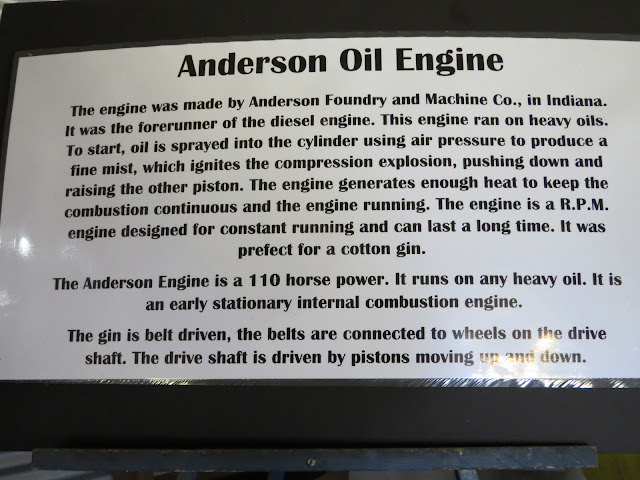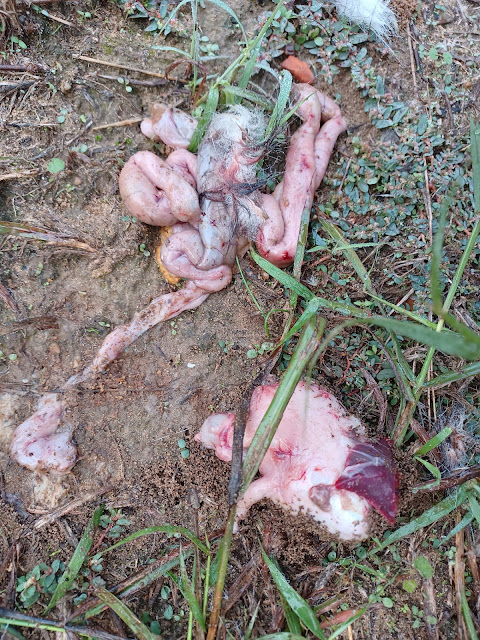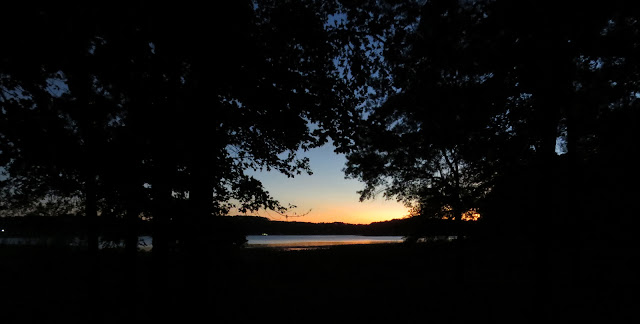I've noticed that the posts I write about museum visits tend to be the least read, and that's saying a lot when only a handful of my 750 posts have managed to claw their way up into the lower 2-digit page-hit level. (My last museum post just barely made it halfway up the 1-digit ladder!) But then again, it's my blog so I'm going to do another museum post so you'll have to turn it off, tune it out, or just plain ignore it.
And I will try to keep it short. (But we'll have to see how that goes!)
As I was heading home after a week of making myself dizzy hiking the same 5 miles of trail in Martin Creek State Park I passed through Henderson Texas, and prominently displayed on my map was the Henderson Depot Museum. A click on the map-bubble for the museum showed that it had opened not quite 30 minutes ago. (Ain't technology great?!)
Being a sucker for all things railroad - and trying to be a little less isolationist - I decided to swing by and see what the parking lot looked like, congestion-wise.
Turns out it was just my kinda parking lot. Mostly, but not completely, empty.
Just enough vehicles that I won't be the only one in there and on display, being judged the whole time by the staff, (one of the curses of introvertism) but not so many that I'd be mingling too closely with the other patrons. (OK, we can blame a little bit of that on introvertism but these are is still COVID times! No matter how many of us are trying to ignore the facts.)
So I decided to check it out and tied down my train - OK Yeah, I don't really have a train (I wish!) so in reality I parked The Van.
with the exception of its name, the depot, which I'll get to in a moment, and this single caboose, which was locked up and inaccessible, both doors (I tried) there wasn't much railroad to this museum.
Like many of these community style museums funding and exhibits are mostly through local donations and volunteer labor. Yes, that can make things a little quirky but I've visited several of these types of museums that have turned out to be be really interesting. And since they tend to focus on local stuff, I have often learned things I'm not likely to come across otherwise.
For instance, where else would I learn that the handful of houses located just outside the entrance to the State Park I had been staying at are sitting on the site of Harmony Hill?
Quite a little town in the mid 1800's that, in addition to nearly a dozen shops and a furniture factory, included a Masonic Hall, a race-track (horse) and a number of thriving taverns. (apparently even the Mercantile did a booming "adult beverage" business out the back door on race days!)
 |
| An assortment of butter-making equipment |
At $3 a pop, $2 for seniors, this museum certainly isn't supplementing its funding at the door. In fact, when I pulled out the single $20 bill I carry folded up between my credit cards, where it will stay for months, even years, since I pretty much always use cards for everything, the woman at the front just waved me on through saying it wasn't worth dealing with the change. (I offered my card but she didn't want to mess with that either. - I know. I know. I've got so much charm and good-looks I'm dangerous! - See! I told you I'm dangerous! At least one of you just laughed so hard you nearly choked!)
The museum is called The Depot because that's what they started with, but now they've expanded and most of the inside displays are housed in a new building while the depot itself is used mostly as a community gathering space and class room.(They actually have another classroom in the new building too which tends to suggest a lot of school field trips.)
The new building houses an eclectic array of exhibits
that tell and illustrate the local history
as well as the lifestyleof anywhere from a couple centuries to a couple of decades ago.
And yes, when I saw this dress, which was apparently worn by one of the early 20th century school teachers, I had to look behind it to see if they had pinned up the fabric back there.
Nope.
Like this outfit displayed elsewhere in the museum, what you see is what you get.
Those were some svelte women!
But as this 1930 photo shows, not everybody was skinny back then! - Just more of us than today - - -
Outside the main building some displays, such as an open-air, steam-powered saw-mill and this carousel, are fenced off waiting on the slow process of volunteer-driven restoration.
Others, like this typical 5-room dogtrot home, are open and ready for self-guided exploration.
I'm not sure what it says about me, but when I walked into its 1900's kitchen I was struck by how comfortable I felt in there and that got me to looking around and thinking, and I decided I could manage very well, and happily, in a space like this.
No soft-close drawers, automatic ovens, exotic counter-tops and back-splashes. All the things that, based on the house hunting and renovation shows of today, we just can't live without!
There's also a complete cotton gin sitting on the museum grounds and this is the two- cylinder Anderson oil engine that ran everything in the gin through a series of leather belts.
You can get a sense of the scale of this thing from the cut-down milk jug and the pails.
Those two tubes on the top are the cylinders,
each of which produces 55 hp!
Elsewhere on the grounds are an assortment of 'town' buildings such as the doctor's office, a general store, and a printer's, along with a covered area full of old farming tools and implements, but in a (clearly failed) attempt to keep this post short I'm going to skip all that.
Except for this.
This is the remnants of a small broom-making shop opened in 1933 by Jesse Rogers, 20 years old at the time, after completing a course at the Austin school for the blind.
Here he supported himself, and eventually his family, making brooms, whisk brooms, and mops by touch day after day right up until he died in the mid 1980's
Anyway, I think there's a lot of value to be found in these little community style museums and though posts about them don't seem to generate much interest, whenever I can force myself into one of them I expect I'll continue to spit into the wind - I mean post about it.





























































